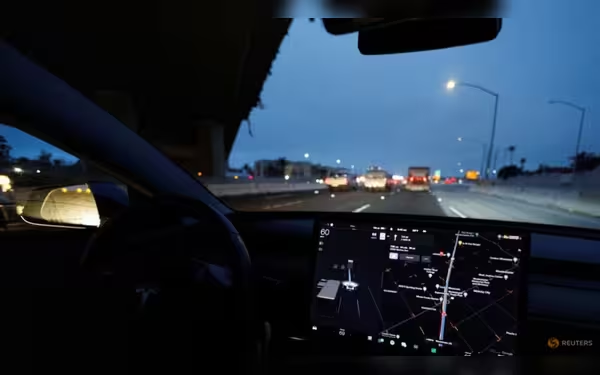Saturday, November 16, 2024 07:31 PM
Study Reveals Driver Distraction Risks with Partial Automation Technologies
- Drivers engage in non-driving activities with automation systems.
- IIHS study highlights need for stricter safeguards.
- Education on technology limitations is crucial for safety.
 Image Credits: channelnewsasia
Image Credits: channelnewsasiaA new IIHS study reveals significant driver distraction risks associated with partial automation technologies like Tesla's Autopilot and Volvo's Pilot Assist.
In recent years, the automotive industry has witnessed a significant shift towards the integration of advanced technologies aimed at enhancing driving safety and convenience. Among these innovations, partial automation systems have emerged as a popular feature in modern vehicles. These systems, which include technologies like Tesla's Autopilot and Volvo's Pilot Assist, are designed to assist drivers by automating certain driving tasks. However, a new study conducted by the Insurance Institute for Highway Safety (IIHS) raises serious concerns about driver distraction when using these systems.
The IIHS study, which spanned a month, focused on how drivers interacted with partial automation technologies. The findings revealed that drivers were more likely to engage in non-driving activities, such as checking their phones or eating, while using these systems. This behavior poses a significant risk, as it can lead to dangerous situations on the road. The research highlighted that some drivers were able to easily bypass rules intended to limit distractions, further emphasizing the need for stricter safeguards.
Partial automation systems utilize a combination of cameras, sensors, and software to help regulate vehicle speed and maintain lane position. While these technologies can make driving easier, they also require drivers to remain vigilant and ready to take control at any moment. Unfortunately, the study found that many drivers adapted their behavior in ways that increased their likelihood of distraction. IIHS President David Harkey noted, "If you train them to think that paying attention means nudging the steering wheel every few seconds, then that's exactly what they'll do." This statement underscores the importance of proper training and awareness when using such technologies.
In the study involving Tesla's Autopilot, 14 participants drove over 12,000 miles, triggering nearly 4,000 attention-related warnings. On average, drivers responded to these warnings in about three seconds, primarily by nudging the steering wheel. This quick response often prevented more serious issues from arising. Conversely, the study involving Volvo's Pilot Assist revealed that 29 volunteers were distracted for a staggering 30 percent of the time while using the system, a figure deemed "exceedingly high" by the researchers.
The findings from these studies highlight a critical need for improved safeguards in partial automation systems. As automakers race to deploy these technologies, it is essential to ensure that drivers remain attentive and engaged. The potential for distraction and the associated risks cannot be overlooked. As we move towards a future where automation plays a larger role in driving, it is crucial for both manufacturers and drivers to prioritize safety and responsibility.
While partial automation technologies offer exciting advancements in driving convenience, they also come with significant challenges. Drivers must be educated about the limitations of these systems and the importance of staying focused on the road. As technology continues to evolve, it is imperative that we strike a balance between innovation and safety, ensuring that our roads remain safe for everyone.













